Halogenation is a substitution reaction, where halogen replaces one or more hydrogens of hydrocarbon
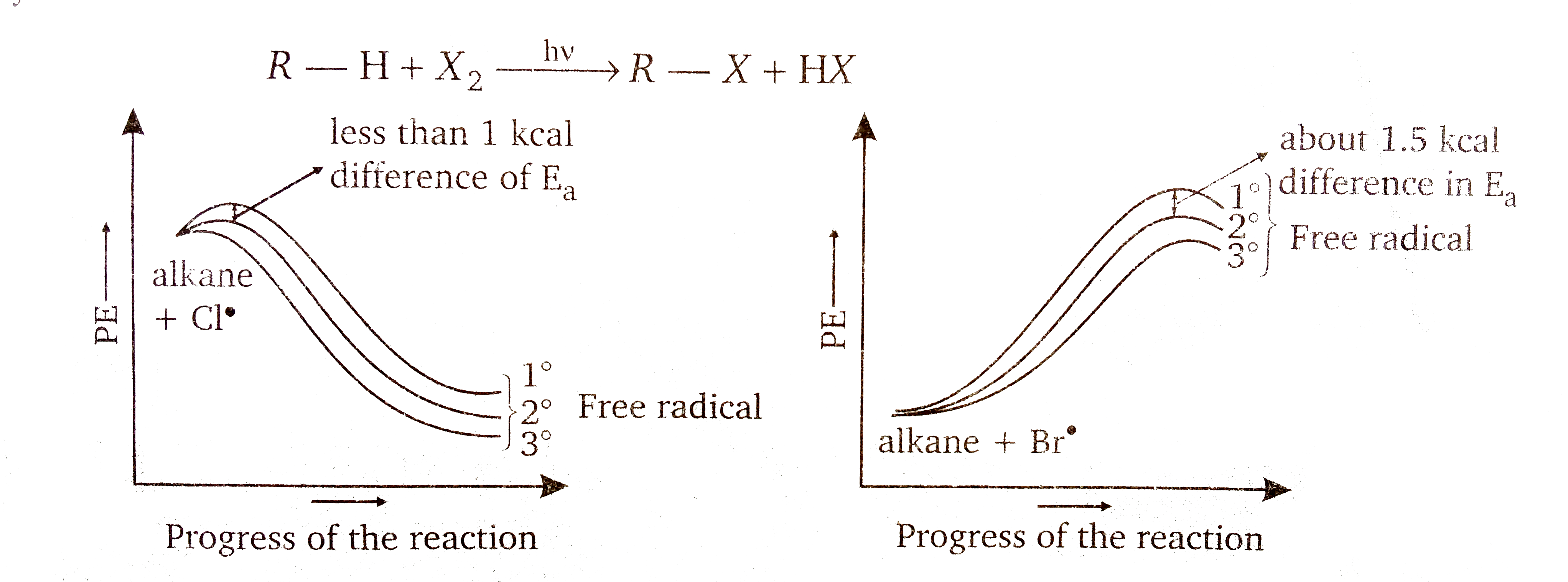
Chlorine free radical make 1∘,2∘,3∘ radicals with almost equal ease, whereas bromine free radicals have a clear preference for the formation of tertiary free radicals. So, bromine is less reactive, and more selectrive whereas chlorine is less selective and more reactive.
The relative rate of abstraction of hydrogen by Br∗ is
3∘1600>2∘82>1∘1
3∘5>2∘3.8>1∘1
CH3−CH3∣CH−CH3Cl2/hv−−−→ product
Major product in the above reactio is:
CH3−CH3∣CH−CH2−Cl
CH3−CH3∣CH∣Cl−CH3
CH3−CH2−CH2−Cl
CH3−CH∣Cl−CH2−CH3
The correct Answer is:a
ox−C−C∣C−C∣C−C
CH3−CH3∣CH−CH2−ClRelative formation is1∘=9×1, relative formation of 3∘=5×1
∴ %yield =9/14×100
Topper's Solved these Questions
- HYDROCARBONS (ALKANES)BOOK - MS CHOUHANCHAPTER - HYDROCARBONS (ALKANES)EXERCISE - Level 1 (Q.1 To Q.30)
1 Videos
- HYDROCARBONS (ALKANES)BOOK - MS CHOUHANCHAPTER - HYDROCARBONS (ALKANES)EXERCISE - Level 1 (Q.31 To Q.50)
1 Videos
- ALKYL HALIDESBOOK - MS CHOUHANCHAPTER - ALKYL HALIDESEXERCISE - Level -2
1 Videos
- HYDROCARBONS (ALKENES)BOOK - MS CHOUHANCHAPTER - HYDROCARBONS (ALKENES)EXERCISE - LEVEL - 2
1 Videos
Similar Questions
Knowledge Check
Halogenation is a substitution reaction, where halogen replaces one or more hydrogens of hydrocarbon
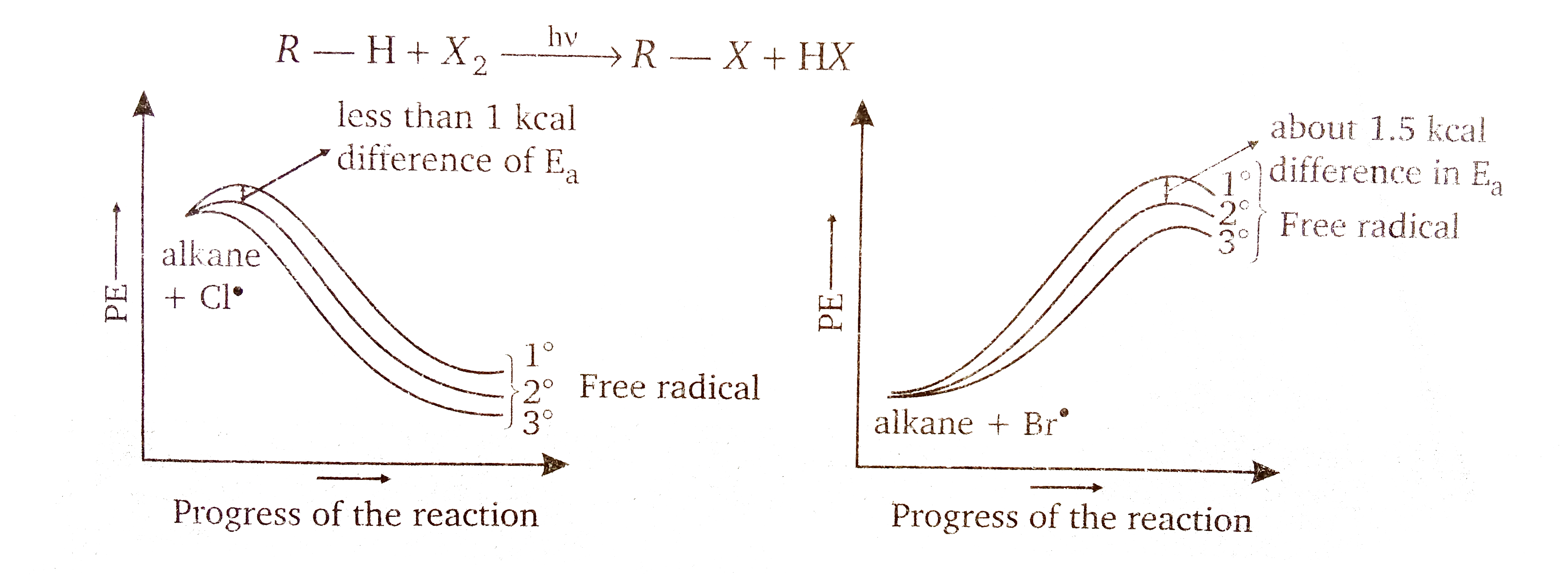
Chlorine free radical make 1∘,2∘,3∘ radicals with almost equal ease, whereas bromine free radicals have a clear preference for the formation of tertiary free radicals. So, bromine is less reactive, and more selectrive whereas chlorine is less selective and more reactive.
The relative rate of abstraction of hydrogen by Br∗ is
3∘1600>2∘82>1∘1
3∘5>2∘3.8>1∘1

What is the value of x (% yield of product)?A18%B82%C90%D60%Halogenation is a substitution reaction, where halogen replaces one or more hydrogens of hydrocarbon
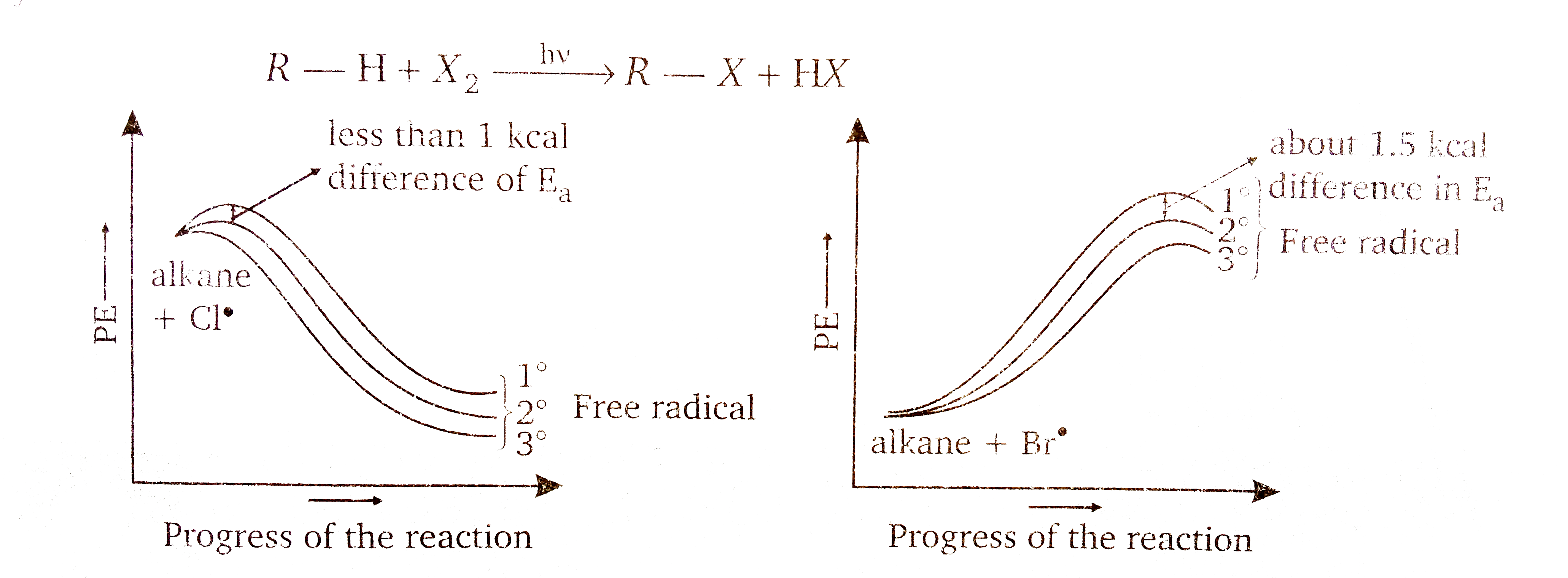
Chlorine free radical make 1∘,2∘,3∘ radicals with almost equal ease, whereas bromine free radicals have a clear preference for the formation of tertiary free radicals. So, bromine is less reactive, and more selectrive whereas chlorine is less selective and more reactive.
The relative rate of abstraction of hydrogen by Br∗ is
3∘1600>2∘82>1∘1
3∘5>2∘3.8>1∘1

Above product will obtained in better yield if X isACl2BI2CBr2Dcan't be predictedHalogenation is a substitution reaction, where halogen replaces one or more hydrogens of hydrocarbon
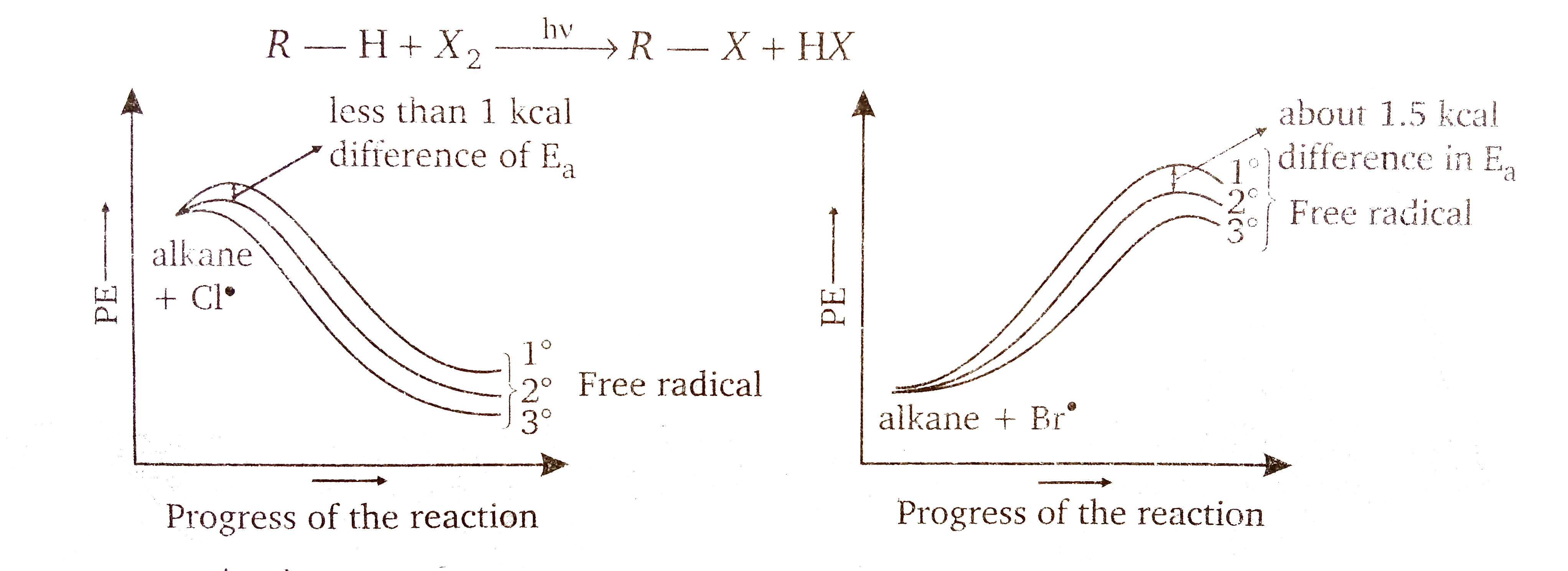
Chlorine free radical make 1∘,2∘,3∘ radicals with almost equal ease, whereas bromine free radicals have a clear preference for the formation of tertiary free radicals. So, bromine is less reactive, and more selectrive whereas chlorine is less selective and more reactive.
The relative rate of abstraction of hydrogen by Br∗ is
3∘1600>2∘82>1∘1
3∘5>2∘3.8>1∘1
1-halo-2,3-dimethyl butane will be obtained in better yields, if halogen is:ABr2BCl2CI2Dcan't be predicted
Halogenation is a substitution reaction, where halogen replaces one or more hydrogens of hydrocarbon
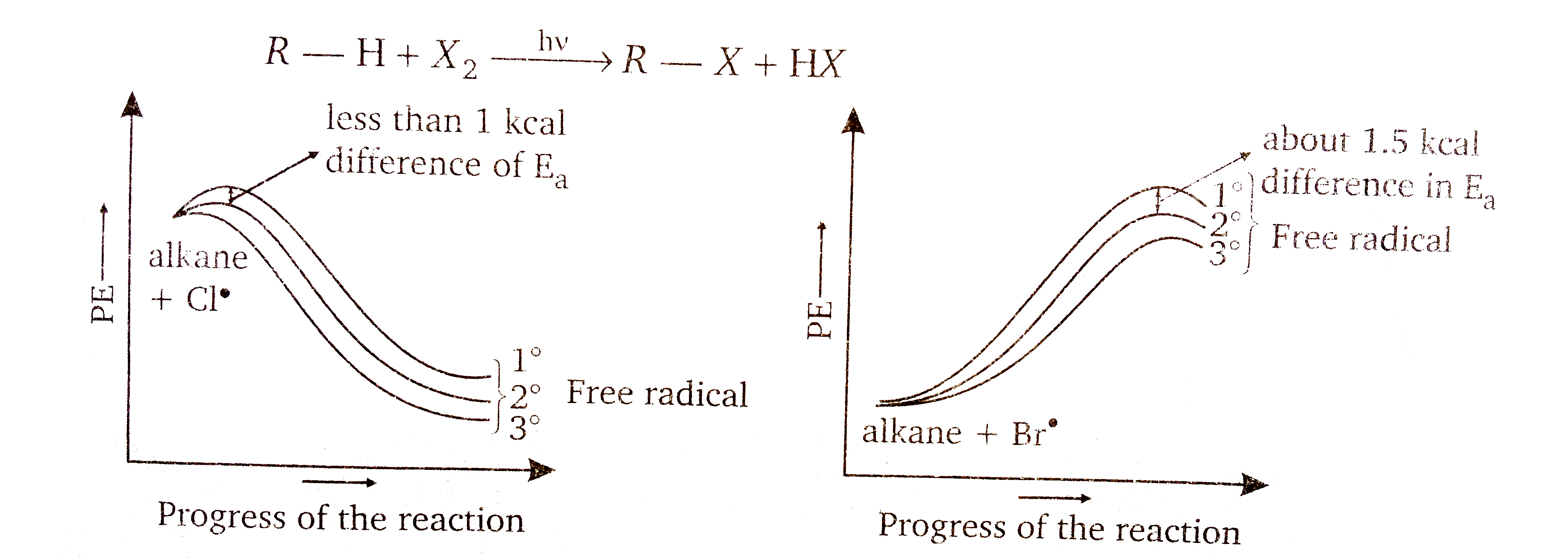
Chlorine free radical make 1∘,2∘,3∘ radicals with almost equal ease, whereas bromine free radicals have a clear preference for the formation of tertiary free radicals. So, bromine is less reactive, and more selectrive whereas chlorine is less selective and more reactive.
The relative rate of abstraction of hydrogen by Br∗ is
3∘1600>2∘82>1∘1
3∘5>2∘3.8>1∘1
How many dichloro products (including stereoisomers) will be formed when R-2-chloropentane reacts with Cl2 in presence of UV radiation?
View SolutionHalogenation is a substitution reaction, where halogen replaces one or more hydrogens of hydrocarbon
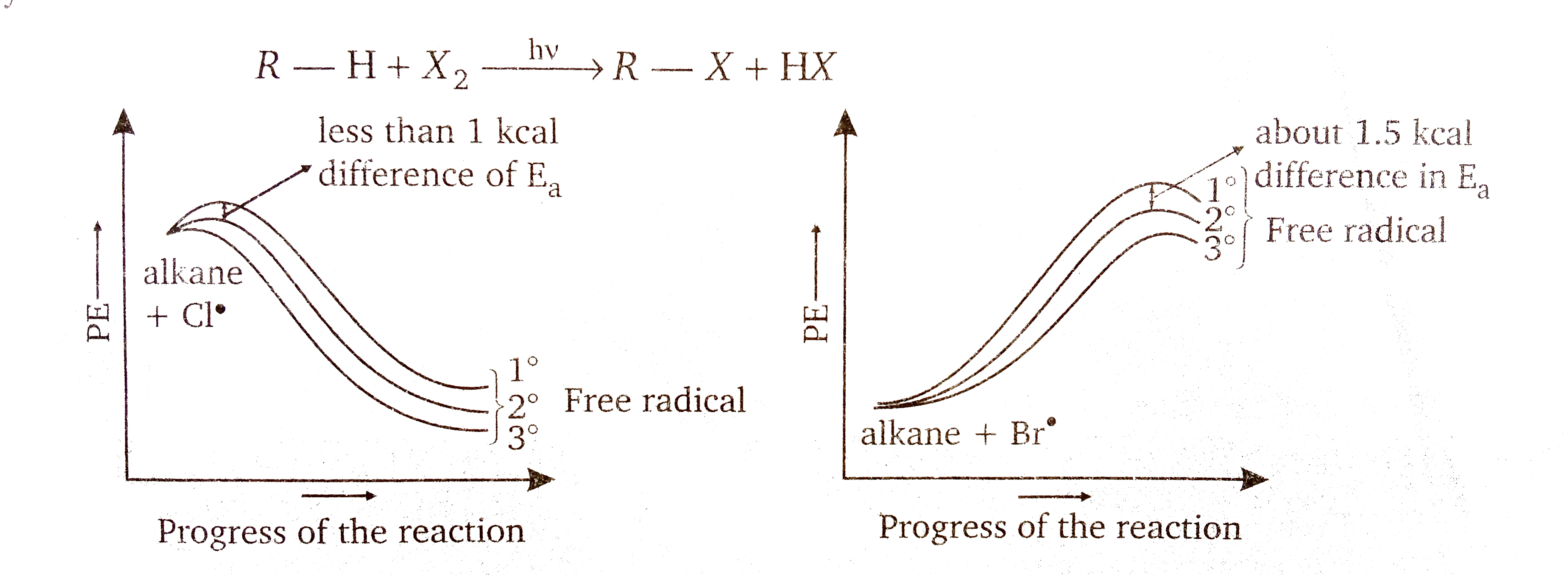
Chlorine free radical make 1∘,2∘,3∘ radicals with almost equal ease, whereas bromine free radicals have a clear preference for the formation of tertiary free radicals. So, bromine is less reactive, and more selectrive whereas chlorine is less selective and more reactive.
The relative rate of abstraction of hydrogen by Br∗ is
3∘1600>2∘82>1∘1
3∘5>2∘3.8>1∘1
Which of the following will give five monochloro products, when allowed to react with Cl2 in presence of sun light (excluding stereoisomers)?
View SolutionHalogenation is a substitution reaction, where halogen replaces one or more hydrogens of hydrocarbon
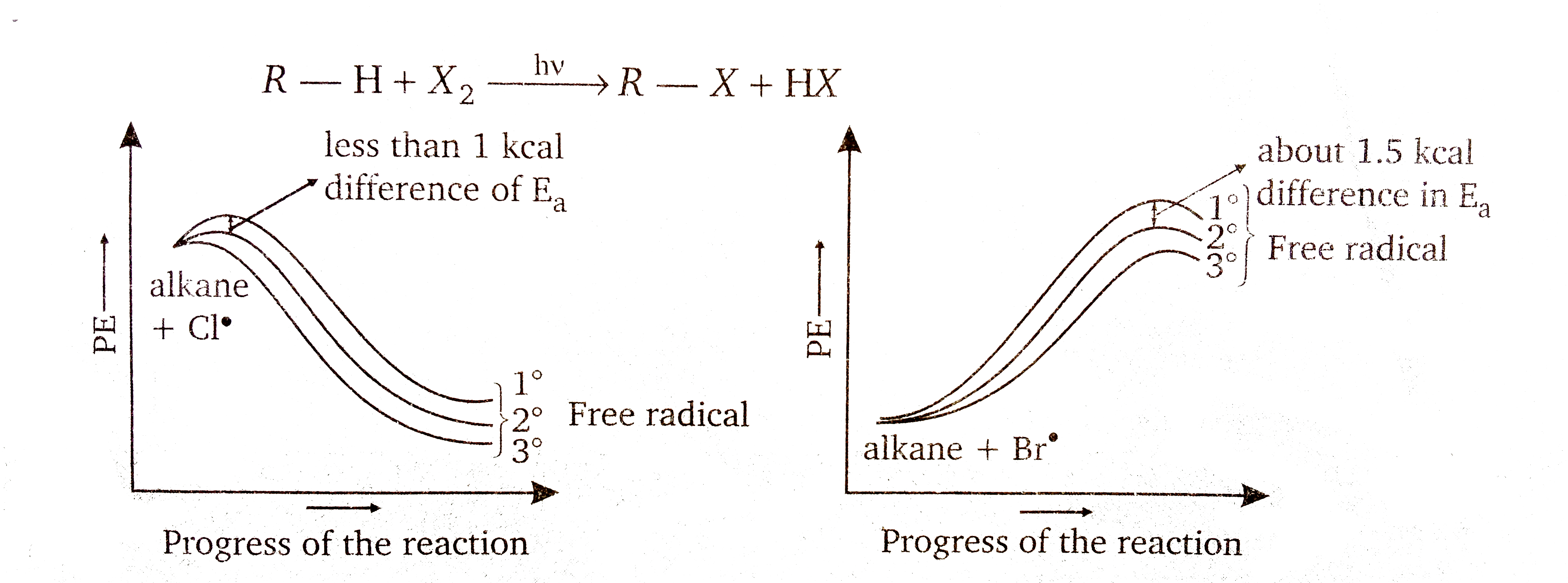
Chlorine free radical make 1∘,2∘,3∘ radicals with almost equal ease, whereas bromine free radicals have a clear preference for the formation of tertiary free radicals. So, bromine is less reactive, and more selectrive whereas chlorine is less selective and more reactive.
The relative rate of abstraction of hydrogen by Br∗ is
3∘1600>2∘82>1∘1
3∘5>2∘3.8>1∘1
What would be the product ratio x/y in the chlorination of propane if all the hydrogen were abstracted at equal rate?
CH3−CH2−CH3Cl2−−−−−→hvCH3−CH2−CH2(x)−Cl+CH3−C∣Cl(y)H−CH3
View SolutionFree radicals have ___.
View SolutionThe ease of formation of free radicals follows the order -
View Solution
